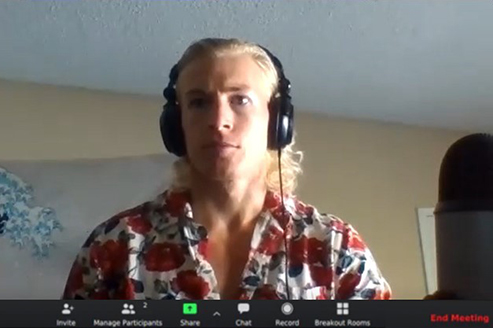

For more than a decade, Susana Valente, PhD, on Scripps Research’s Florida campus, has been at the forefront of creative approaches to treating—and possibly even curing—human immunodeficiency virus, or HIV. But Susan’s devotion to studying HIV began much earlier. Here, she talks about what drives her to find better solutions for a virus that affects more than 38 million people globally.
What inspired you to study virology, and why HIV specifically?
Oh, I almost feel like I was a baby when I got interested in this work. I grew up in Portugal, but in my final year of college I studied as an exchange student in Paris, France. Part of that year was an internship, for which I joined an HIV lab. It was like love at first sight and I cannot explain it. I’ve worked on HIV ever since, from my master’s degree through to my PhD and postdoctoral studies. I did work on different parts of the virus each time, but always HIV.
The interesting thing about virology is that you get this complex interplay between the cell and the virus, so you actually end up learning so much general cellular biology. You also have to be very open to start new things; as soon as the virus leads you in a new direction, you follow it, developing projects along the way. With the growth of new technologies, you’re constantly evolving methods and knowledge and it’s all very exciting. Some things we thought we had answered in the late 90s we’re now revisiting with more sensitive approaches and realizing where we were slightly off.
What is your approach to tackling HIV?
We are interested in the latency of the HIV infection, or its ability to lie dormant in the body. There appears to be many reservoirs in the body where the virus can hide, such as the brain, and achieving an effective reactivation of our immune cells comes with all kinds of challenges. For several years, most researchers in the HIV field have been trying to eradicate the virus completely by waking up our immune system, but this is a tall order. Instead, we are currently spearheading a new approach called “block and lock.” We are investigating ways to not just block the virus from replicating itself, but also to keep it silenced, or locked away, forever.
The idea is that the infection would cease to be active, it couldn’t be transmitted, and patients would not need to be on a constant drug regimen. Although the virus wouldn’t technically be eradicated, it would stay suppressed and this would act as a functional cure for people with AIDS. With this in mind, my lab works on the fundamental aspects of HIV and conducts large-scale screenings of drug molecules to identify possible antiviral medicines. We have recently discovered some promising compounds that stop the virus in different ways, so we are now exploring these further for their medicinal potential.
You mentioned that HIV can affect the brain—tell us more about that.
Right, the neurocognitive disorders associated with HIV are a big issue. The exposure of the brain to certain viral proteins can cause different pathological changes which can manifest themselves as dementia and also promote things like anxiety and addiction. The damage to the brain from HIV can be similar to that of substance abuse. And unfortunately, they can both enhance each other. This can make it harder to break free from addiction when someone has the infection.
What is it about the environment at Scripps Research that makes these HIV advances possible?
When I joined the institute in 2009, I felt in the air this sense that you could do what you wanted and that there weren’t many roadblocks for faculty. I feel like I have more of a voice at this institute compared to some others. I have ended up being surrounded by colleagues who are excellent in so many different areas and it makes for exciting collaborations. Some of the chemists we work with are doing some things that are really out of the box.